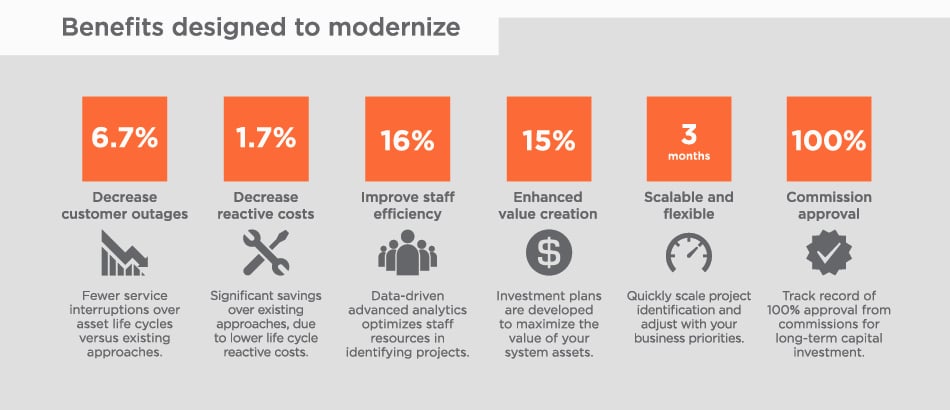Scalable and automated project identification: Develop automatic project scoping and cost estimation in alignment with your grid standards. Scalable to all T&D infrastructure. Users can adjust project scope by adding or removing assets.
Financial project justification: Evaluate project benefits in financial terms, including life cycle avoided reactive costs, customer outages and other business objectives.
Develop long-term investment plans: Establish long-term investment levels and allocations with direct line of sight to projects. Adjust project sequencing and budget levels to evaluate alternative plans as well as how portfolio benefits could be affected.
Robust and proven risk algorithm: Incorporate failure modes, end-of-life curves, and asset health and condition with criticality for direct linkage between assets and customers, normalized across all assets.
Geospatial visualization: Quickly absorb and communicate impacts of decisions to all asset stakeholders. Decrease the time spent planning and engineering projects.
Data-driven: Integrate with your existing data systems to create a business process. Includes several pre-built data cleansers to fill data gaps and provide results in months, not years.









